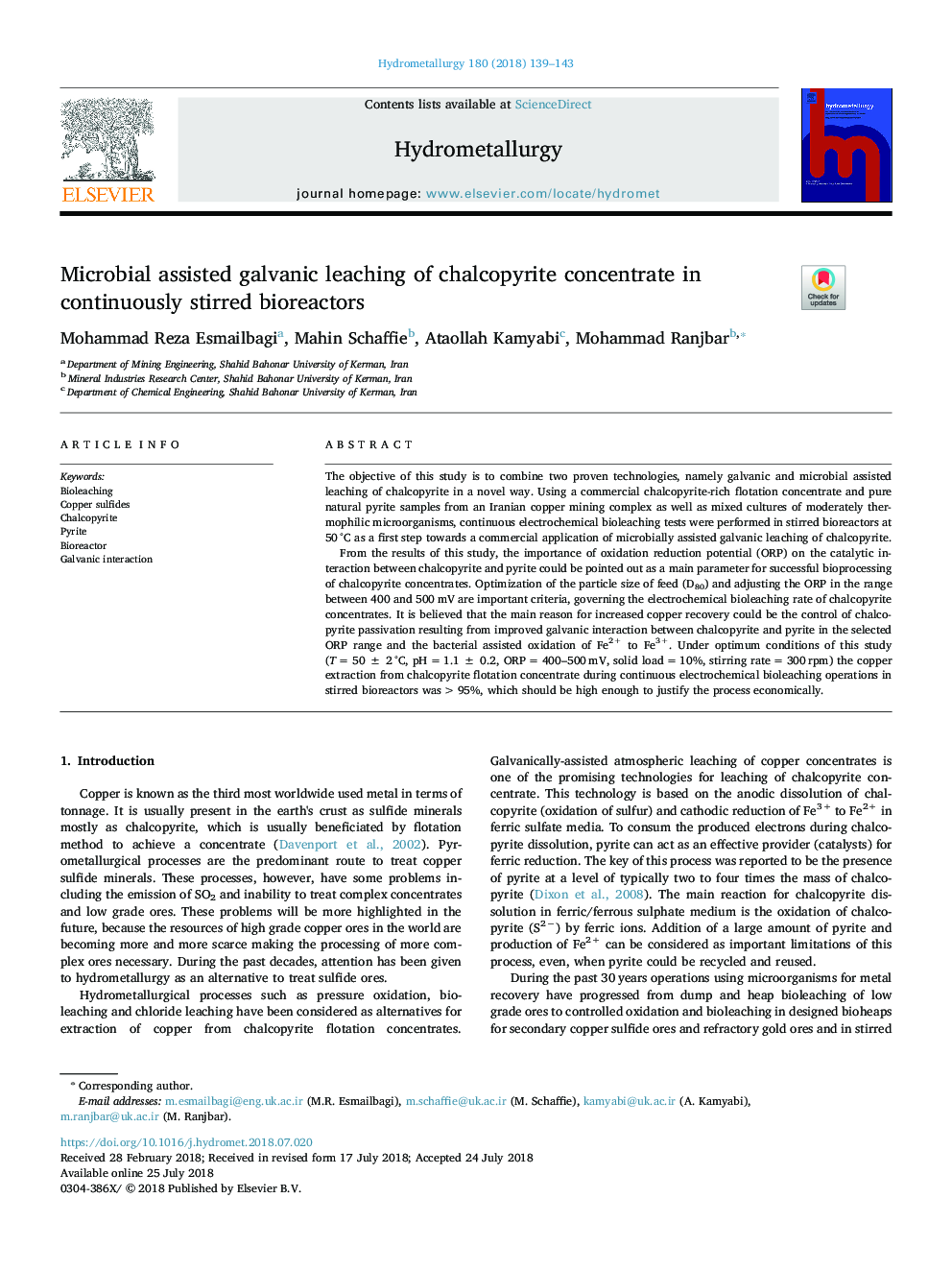| Article ID | Journal | Published Year | Pages | File Type |
|---|---|---|---|---|
| 6658818 | Hydrometallurgy | 2018 | 5 Pages |
Abstract
From the results of this study, the importance of oxidation reduction potential (ORP) on the catalytic interaction between chalcopyrite and pyrite could be pointed out as a main parameter for successful bioprocessing of chalcopyrite concentrates. Optimization of the particle size of feed (D80) and adjusting the ORP in the range between 400 and 500â¯mV are important criteria, governing the electrochemical bioleaching rate of chalcopyrite concentrates. It is believed that the main reason for increased copper recovery could be the control of chalcopyrite passivation resulting from improved galvanic interaction between chalcopyrite and pyrite in the selected ORP range and the bacterial assisted oxidation of Fe2+ to Fe3+. Under optimum conditions of this study (Tâ¯=â¯50â¯Â±â¯2â¯Â°C, pHâ¯=â¯1.1â¯Â±â¯0.2, ORPâ¯=â¯400-500â¯mV, solid loadâ¯=â¯10%, stirring rateâ¯=â¯300â¯rpm) the copper extraction from chalcopyrite flotation concentrate during continuous electrochemical bioleaching operations in stirred bioreactors was >95%, which should be high enough to justify the process economically.
Related Topics
Physical Sciences and Engineering
Chemical Engineering
Chemical Engineering (General)
Authors
Mohammad Reza Esmailbagi, Mahin Schaffie, Ataollah Kamyabi, Mohammad Ranjbar,
